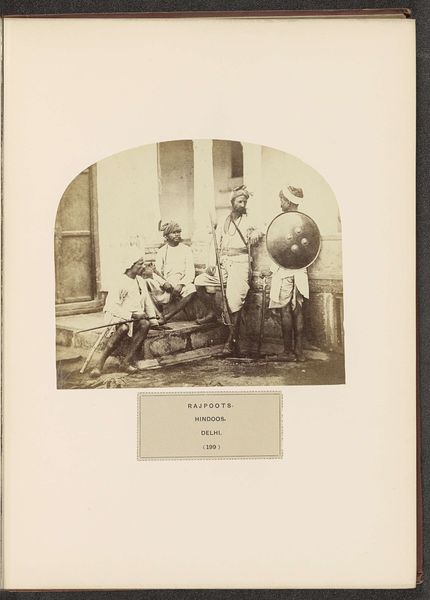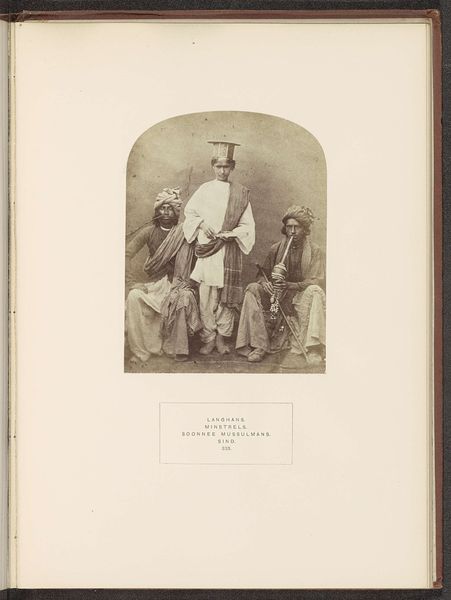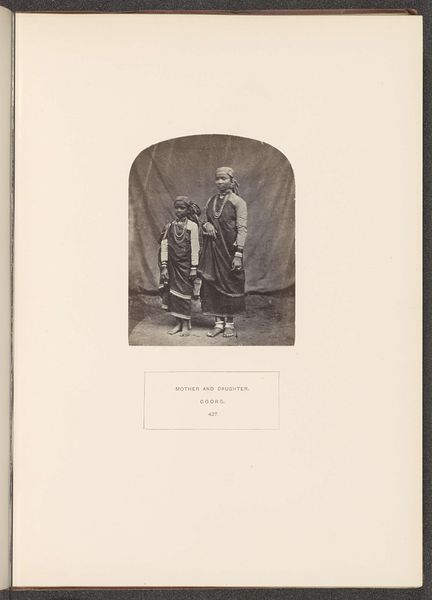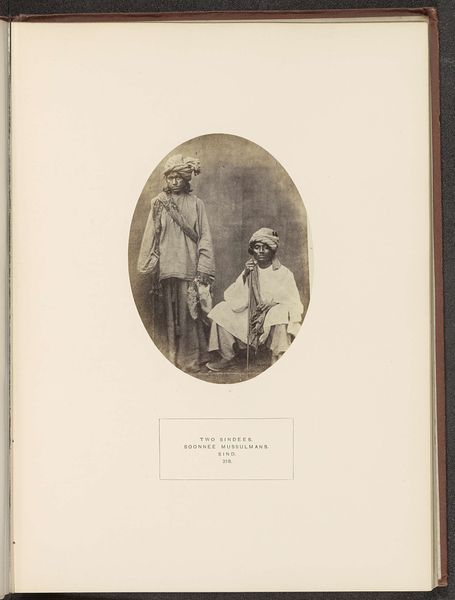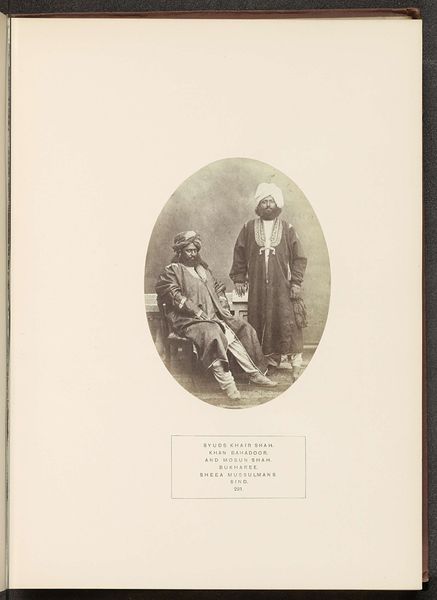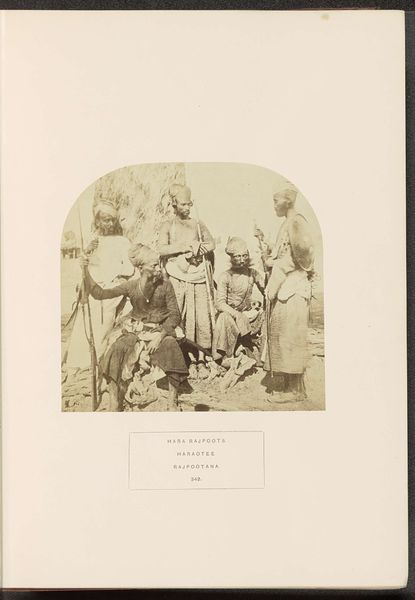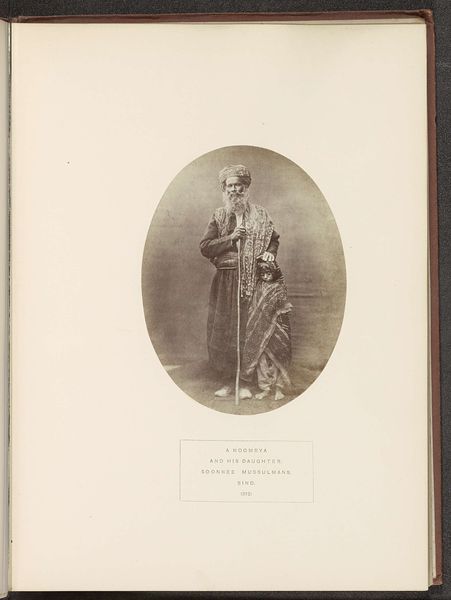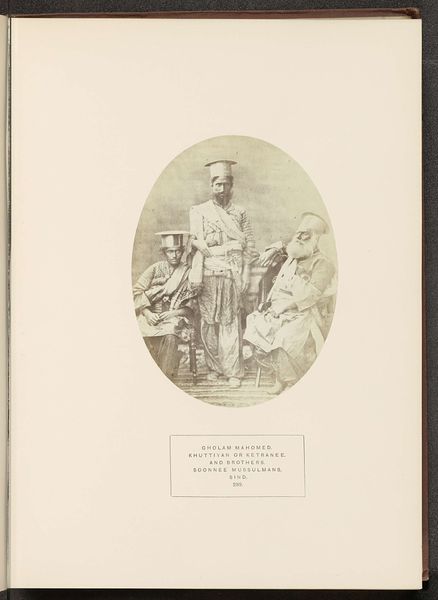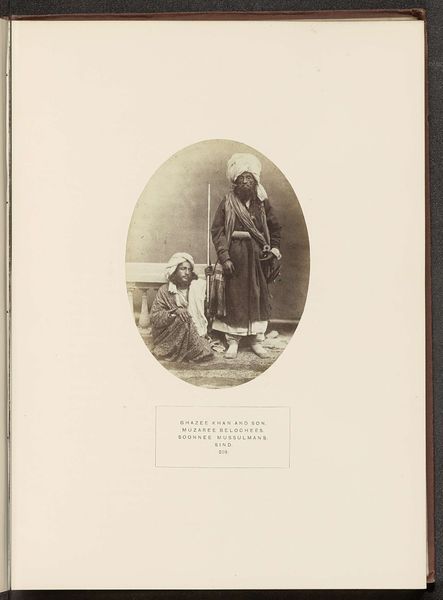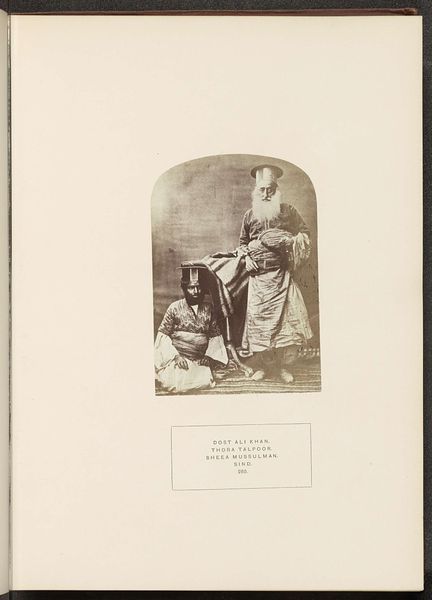
photography
#
portrait
#
photography
Dimensions: height 156 mm, width 127 mm
Copyright: Rijks Museum: Open Domain
Editor: This is "Portrait of three unknown Amil men from Sindh," a photograph taken before 1872 by Henry Charles Baskerville Tanner. It looks like a very formal portrait. What draws your attention to this piece? Curator: I'm immediately drawn to the material context. Think about the production of this photograph, even the choice of the photographic process itself. It wasn’t merely about capturing an image, but about engaging with a technology of representation, of control. Consider the labor involved in preparing the photographic materials, the equipment required, and the deliberate staging of the subjects. These Amil men, likely affluent, become subjects in a colonial visual project. How do their clothes, likely very finely woven textiles, signify their position? Editor: So you are suggesting that the image isn't just about the people pictured, but also about who is taking the picture and why? Curator: Precisely. The act of creating this image is deeply embedded in social and power dynamics. It represents a moment of encounter, a transaction between the photographer and the subjects, mediated by the technology and economic systems of the time. Photography during the colonial era served as a tool to classify, document, and ultimately, exert control over colonized populations. Who paid for this photograph, and why? Editor: I hadn't thought about it that way, focusing on the economics and purpose rather than just what's on the surface of the photograph. It definitely makes me see it differently. Curator: It’s about acknowledging the role materials, production, and patronage play in shaping the narrative. Acknowledging how photography, even in portraiture, participated in the social and political structures of its time is paramount. Editor: That’s a great insight. Thank you for showing me another lens through which to view art.
Comments
No comments
Be the first to comment and join the conversation on the ultimate creative platform.
